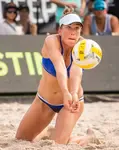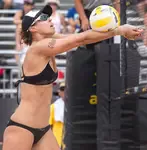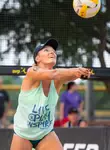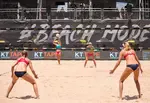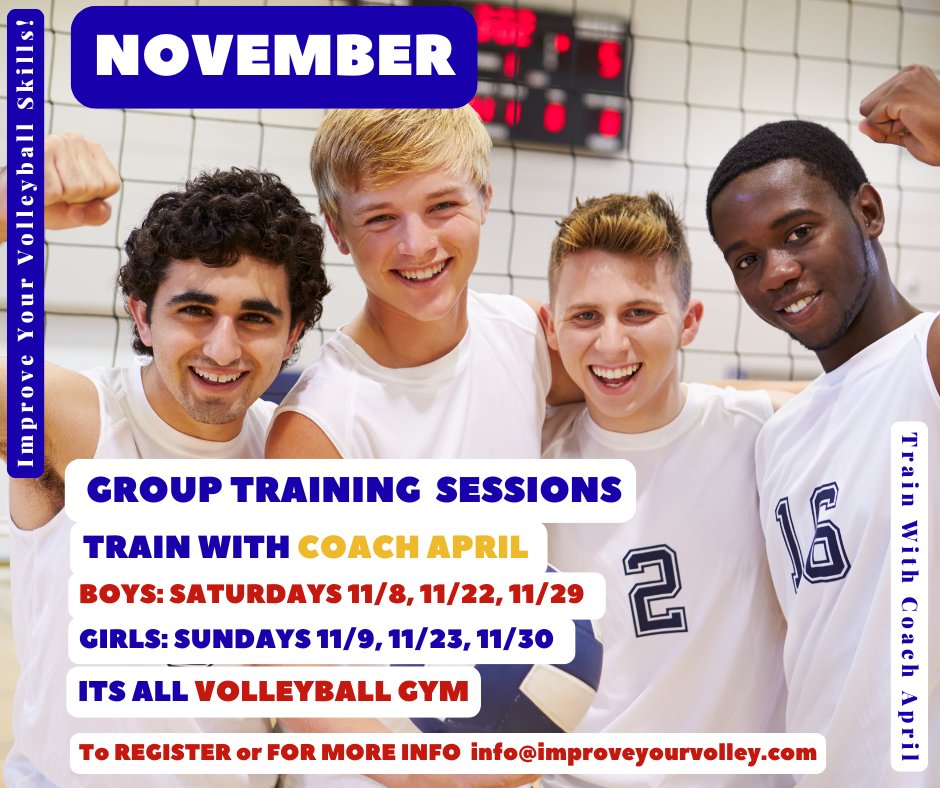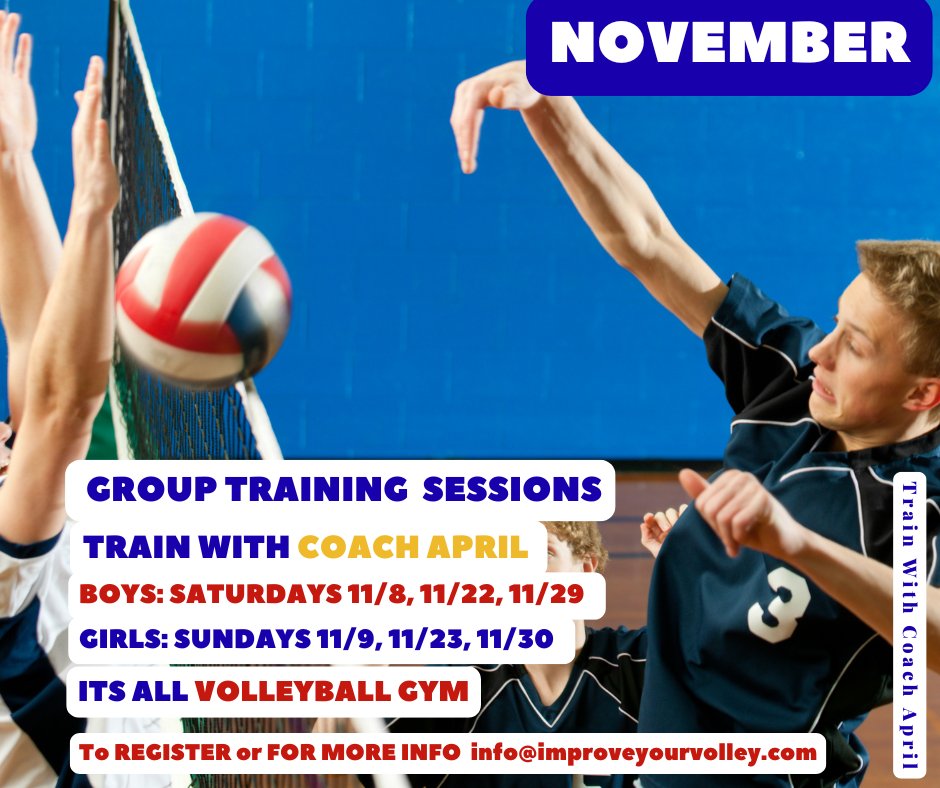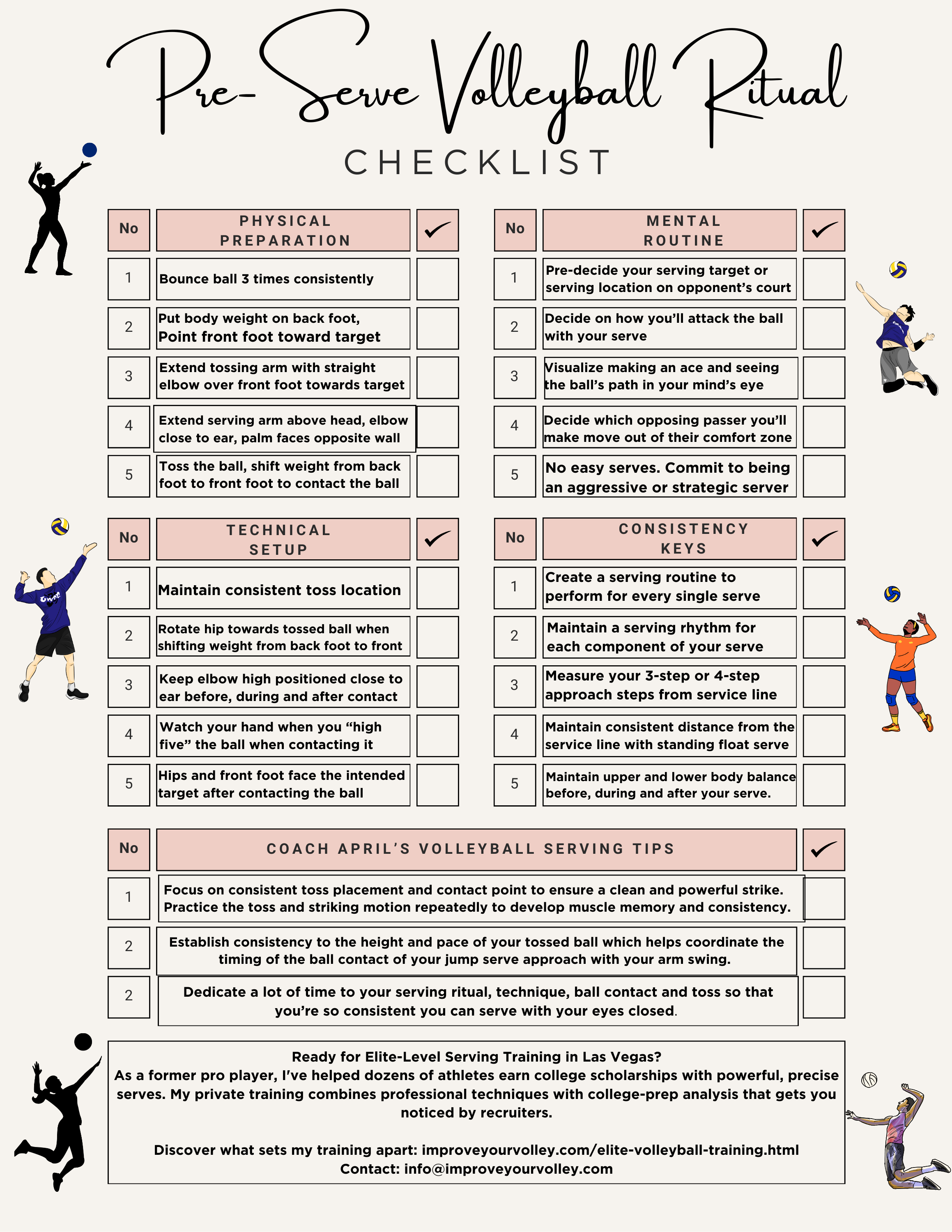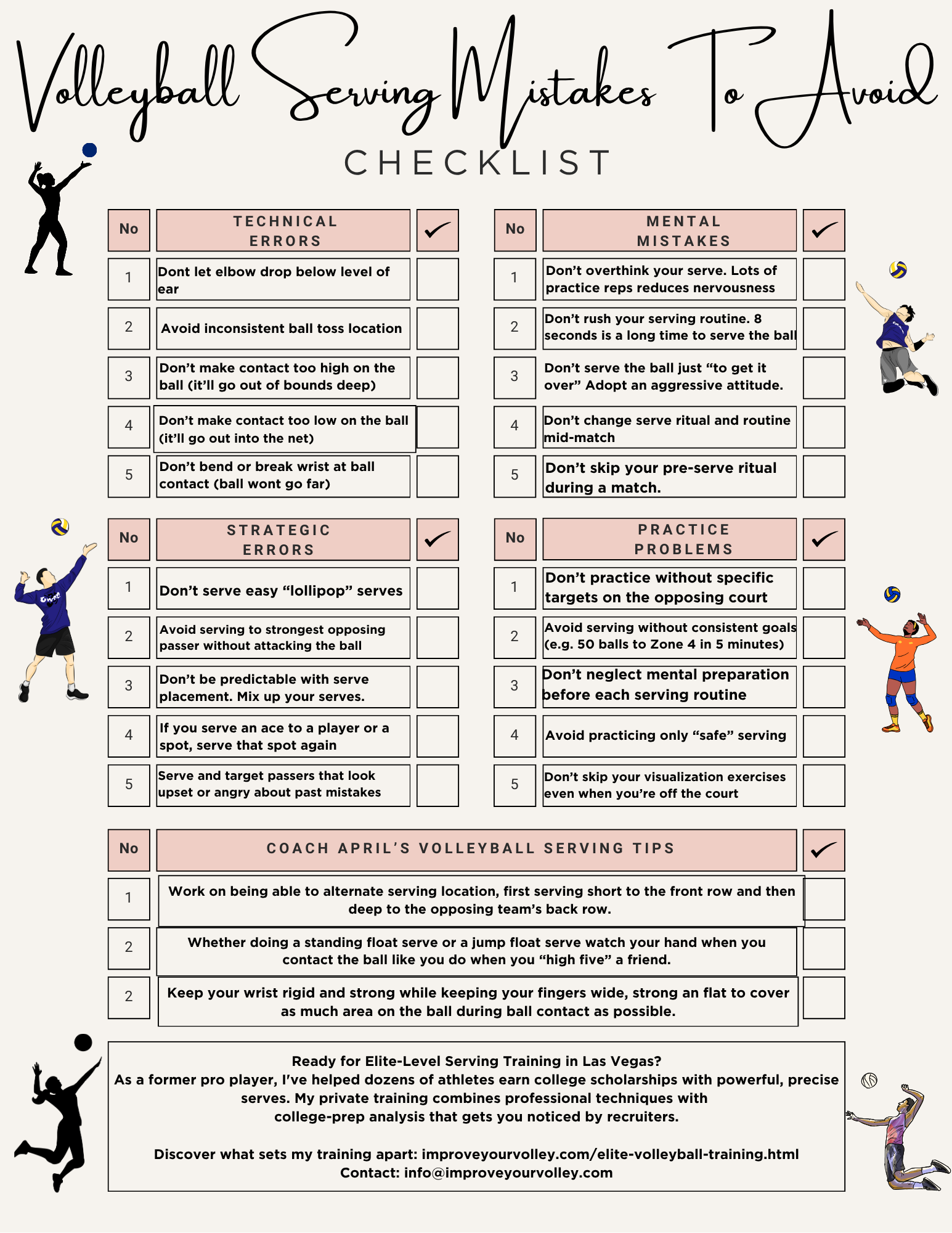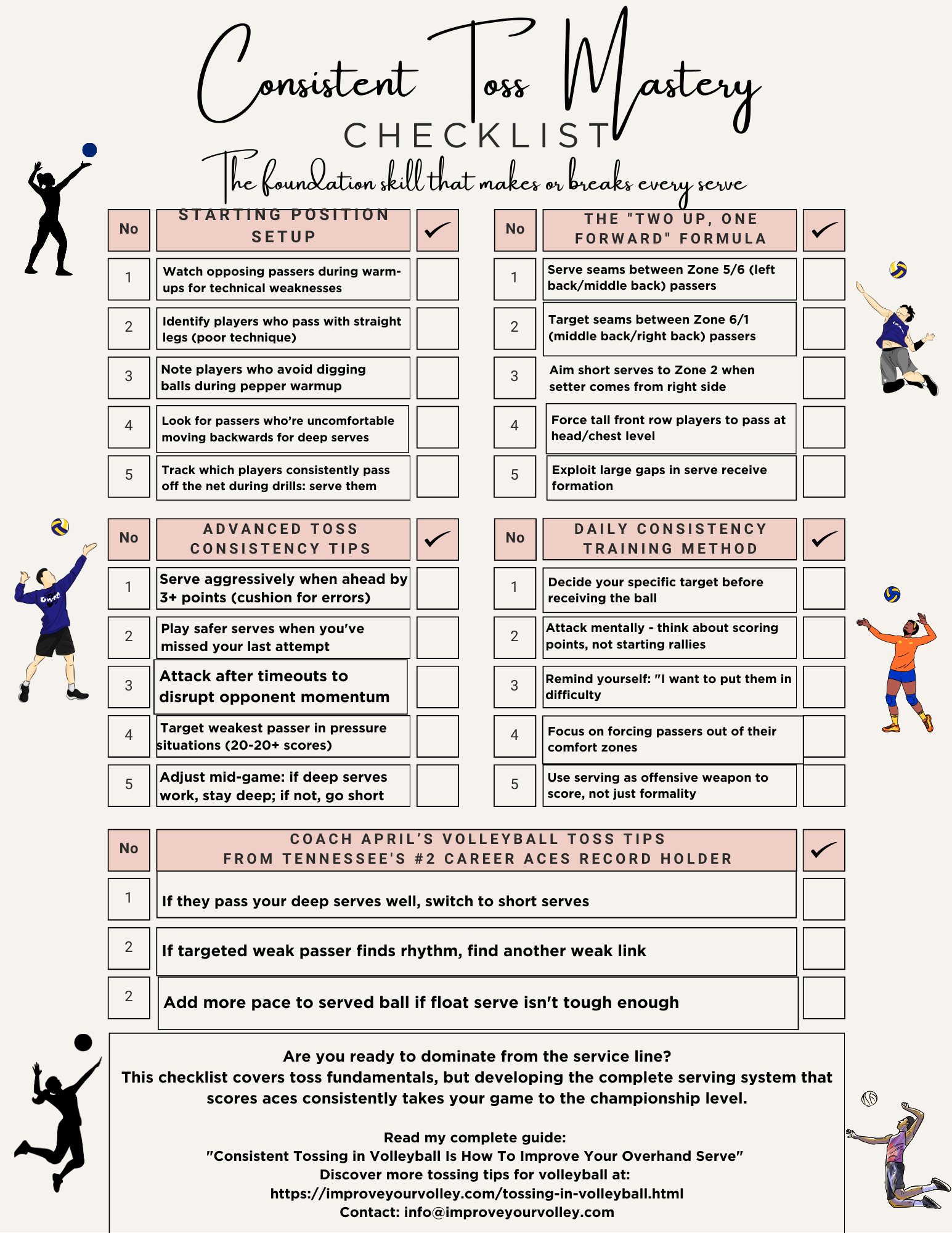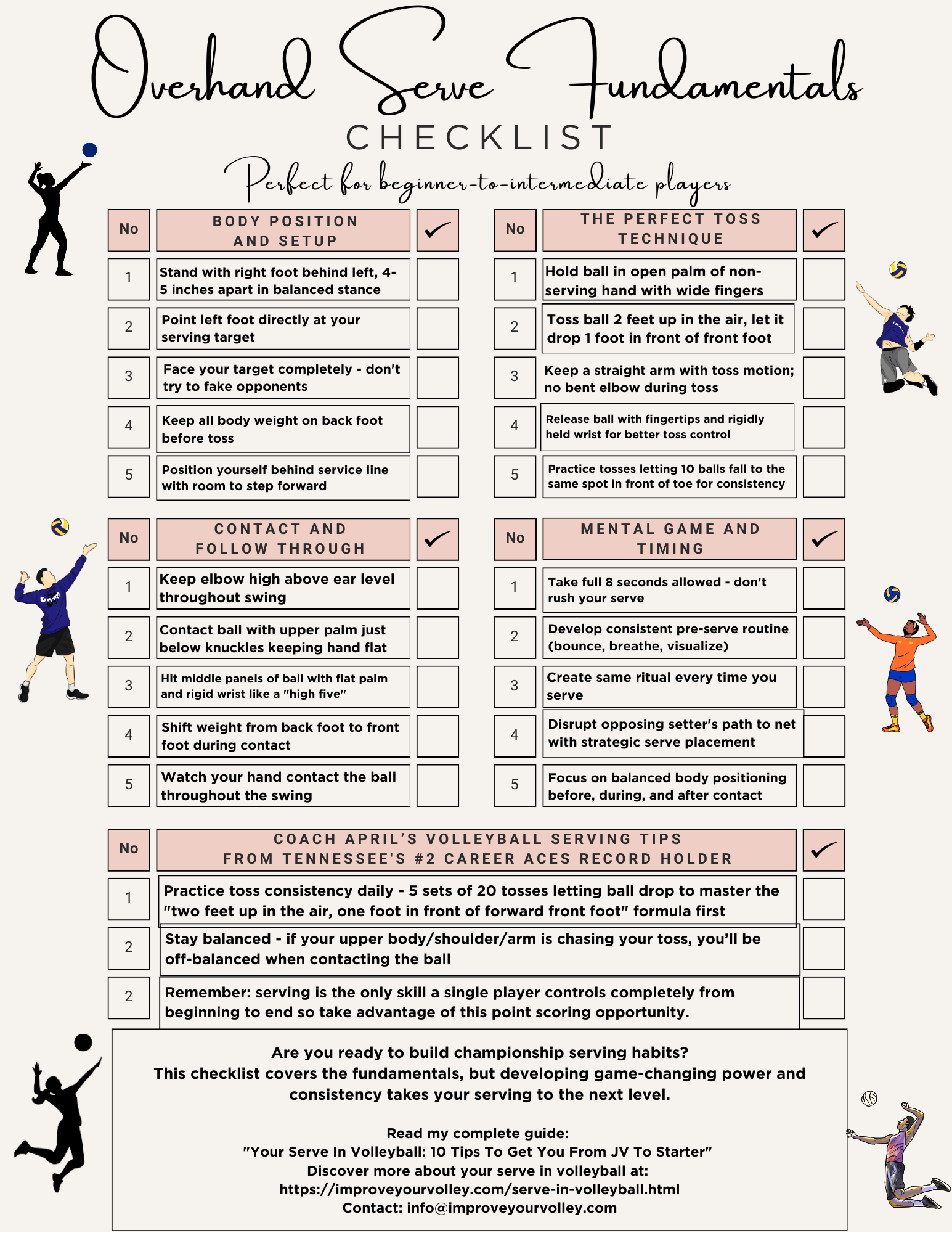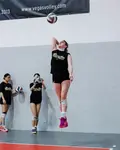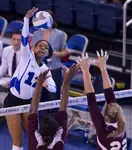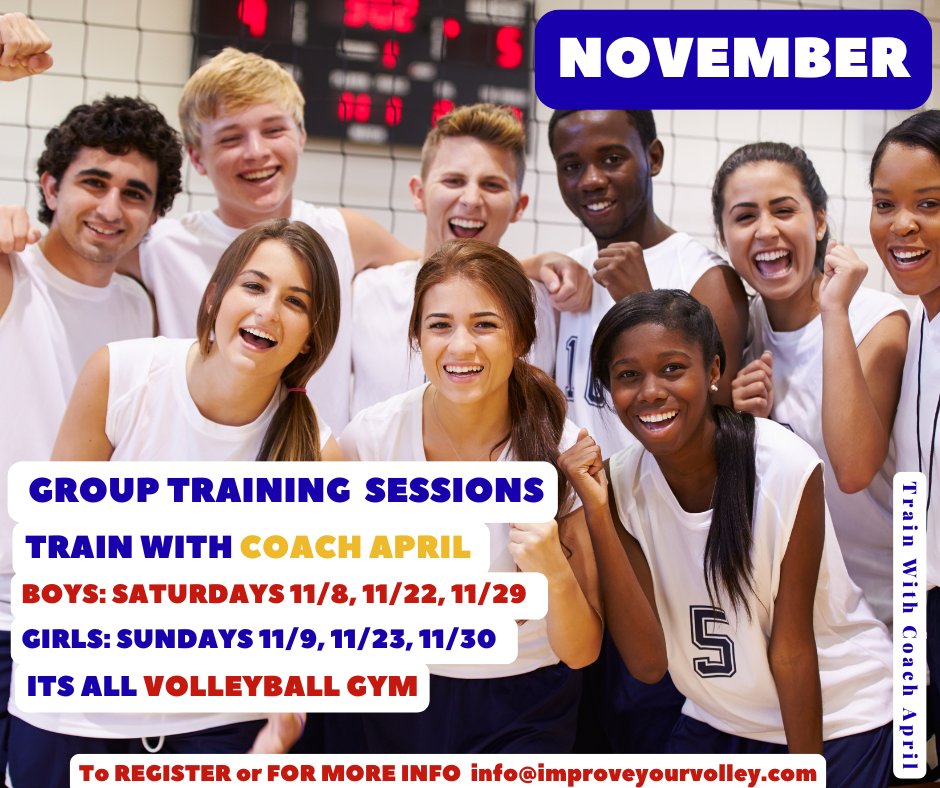 NOVEMBER Group Training with Coach April
Registration is NOW open for Group Training Sessions with me Coach April For BOYS on SATURDAYS 11/8, 11/22, 11/29
For GIRLS on SUNDAYS 11/9, 11/23, 11/30
From 10-11am at the Its All Volleyball gym.
Email: info@improveyourvolley.com to register or for more information
NOVEMBER Group Training with Coach April
Registration is NOW open for Group Training Sessions with me Coach April For BOYS on SATURDAYS 11/8, 11/22, 11/29
For GIRLS on SUNDAYS 11/9, 11/23, 11/30
From 10-11am at the Its All Volleyball gym.
Email: info@improveyourvolley.com to register or for more information- Improve Your Volleyball with Coach April
- How To Play Beach Volleyball
- Beach Volleyball Forearm Pass
What's The Secret To A Beach Volleyball Forearm Pass in Volleyball?
The beach volleyball forearm pass requires a player to use flat forearms held together by clasped hands that guide the ball to another player or over the net.
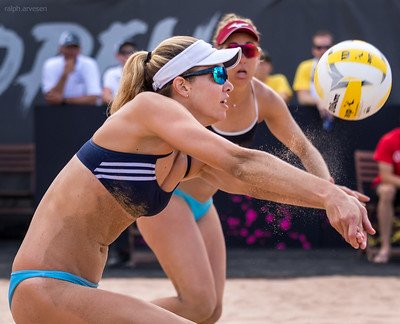 The beach volleyball forearm pass requires a player to use flat forearms held together by clasped hands that guide the ball to another player or over the net. (Ralph Aversen)
The beach volleyball forearm pass requires a player to use flat forearms held together by clasped hands that guide the ball to another player or over the net. (Ralph Aversen)Whether you call it
- serve receive
- bump
- or the forearm pass
the ability to receive the serve requires a player to transfer a ball
- using their flat forearms clasped together by the hands and angled at the shoulders
- while guiding it in the air and/or in the direction of another player or over the net.
Beach volleyball passing is one of the most critical aspects of the beach volleyball game.
Quite frankly, with
- practice,
- concentration and
- repetition
you should be able to improve your beach volleyball passing technique in no time at all.
What Does Your Lower Body Do When You Need To Beach Volleyball Forearm Pass?
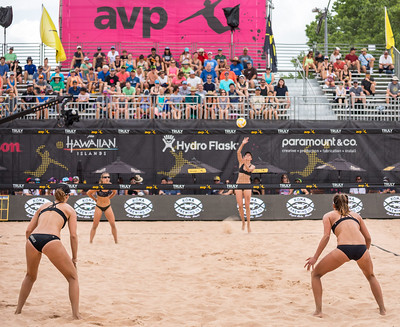 In sand volleyball the way that you should place your feet for the beach volleyball forearm pass ready position isn't much different than what's done in indoor volleyball. (Ralph Aversen, AVP Austin))
In sand volleyball the way that you should place your feet for the beach volleyball forearm pass ready position isn't much different than what's done in indoor volleyball. (Ralph Aversen, AVP Austin))In beach volleyball the way that you should place your feet for the forearm pass ready position does not differ much than what you do in an indoor volleyball game.
Your feet should be
- in a comfortably balanced position about shoulder width apart
- with your knees bent in a slight squat so that you can move front, back, sideways, diagonally or turn and run quickly.
Some players prefer to have their right foot forward when they are passing on the right side and have their left foot forward when passing on the left to
- protect the line that they are playing the closest to and
- it positions their body to face where they want the ball to go.
Alternatively, there are players who
- face their target so they pass straight ahead stepping right to the ball
While the majority of pro players
- angle their shoulders to the target regardless of where they are on the court,
similar to what players do when they were playing indoor.
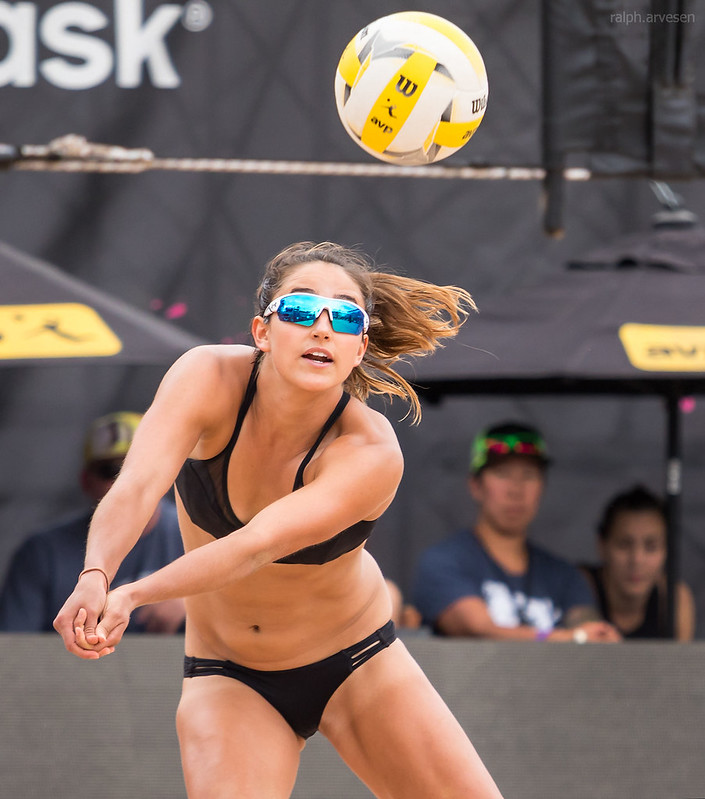 The majority of pro players angle their shoulders to the target regardless of where they are on the court, similar to what players do when they were playing indoor. (Ralph Aversen)
The majority of pro players angle their shoulders to the target regardless of where they are on the court, similar to what players do when they were playing indoor. (Ralph Aversen)How Do You Pass Better in Beach Volleyball?
The secret to better passing in beach volleyball is to
- move your feet so that you get your body behind the ball,
when you can,
- you always want to play the ball within the centerline of your body.
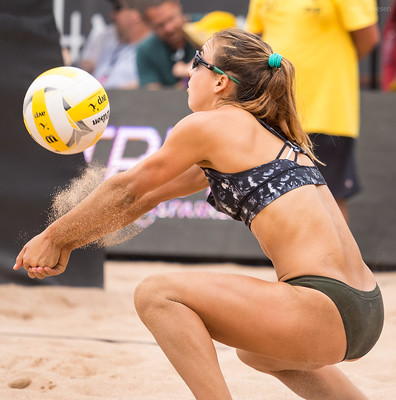 The secret to better passing in beach volleyball is to move your feet so you get your body behind the ball, when you can, you want to play the ball within the centerline of your body. (Ralph Aversen)
The secret to better passing in beach volleyball is to move your feet so you get your body behind the ball, when you can, you want to play the ball within the centerline of your body. (Ralph Aversen)Because you're now playing in the sand,
- you want to run to get to the ball and then
- fight to get your feet in a balanced position underneath you
so that you can have your body behind the ball.
Passing from a straddled position with a stance where one foot is two or three feet in front of the other is not a balanced position.
 Beach Volleyball Forearm pass: Have both feet squarely planted side-by-side, so you're not rocking back and forth or wobbling around by the time you contact the ball. (Ralph Aversen)
Beach Volleyball Forearm pass: Have both feet squarely planted side-by-side, so you're not rocking back and forth or wobbling around by the time you contact the ball. (Ralph Aversen)The best serve receive position for the beach volleyball forearm pass is to have both feet squarely planted side-by-side, so you're not rocking back and forth or wobbling around by the time you contact the ball.
For any last minute adjustments that you make (and you will have to make them) you want to make them so you finish up in this balanced position.
Beach Volleyball Forearm Pass: What Do Your Legs Do When Beach Volleyball Passing?
Just like in indoor you "pass with your legs".
You use your
- bent knees and leg strength to get underneath the ball
- getting your body as far towards the ball to play it
- by stepping into it
with your platform angled to the target.

This has been an important message by your favorite volleyball coach! That's me!!
Thanks for visiting.
Be sure to check out more of my volleyball articles by clicking one of the links below! (April Chapple)
Do You Follow Me on Pinterest?
 Private or semiprivate volleyball indoor/sand lessons are an excellent way for young Las Vegas high school volleyball players to quickly improve their individual skills through a private or semi-private coaching experience.
These lessons are conducted by former pro volleyball player, former USA Volleyball High Performance instructor and Evaluator and Tstreet Vegas 18s head Coach April Chapple on a weekly basis.
Sign up now!
Private or semiprivate volleyball indoor/sand lessons are an excellent way for young Las Vegas high school volleyball players to quickly improve their individual skills through a private or semi-private coaching experience.
These lessons are conducted by former pro volleyball player, former USA Volleyball High Performance instructor and Evaluator and Tstreet Vegas 18s head Coach April Chapple on a weekly basis.
Sign up now!Follow me on Pinterest Volleybragswag to improve your game even faster!
I share alot of individual, partner and easy-to-do volleyball serving drills we do in class with my followers.
Many of these volleyball practice drills you can do at home by yourself or try at your next practice with your teammates.
If you're a B team or JV player trying to make varsity next year...your goal should be to complete 1000 reps a day of at least three of the basic skills on your own...volleyball passing, serving and setting should be at the top of the list.
If your athlete struggles with consistent serve receive, gets subbed out, or is overlooked for playing time—this is the fix you’ve been looking for.

Struggling with passing consistency?
I help talented passers tired of getting pulled from games because of inconsistent serve receive skills BUILD passing confidence without expensive private lessons using the same 3-step system that's helped dozens of my athletes get recruited.
Download my eBook for $17.99 and start building the passing confidence that keeps you on the court—and gets you seen by college coaches.
From Lady Vol to Legend: Coach April Produces Powerful Passionate Players...is that you?
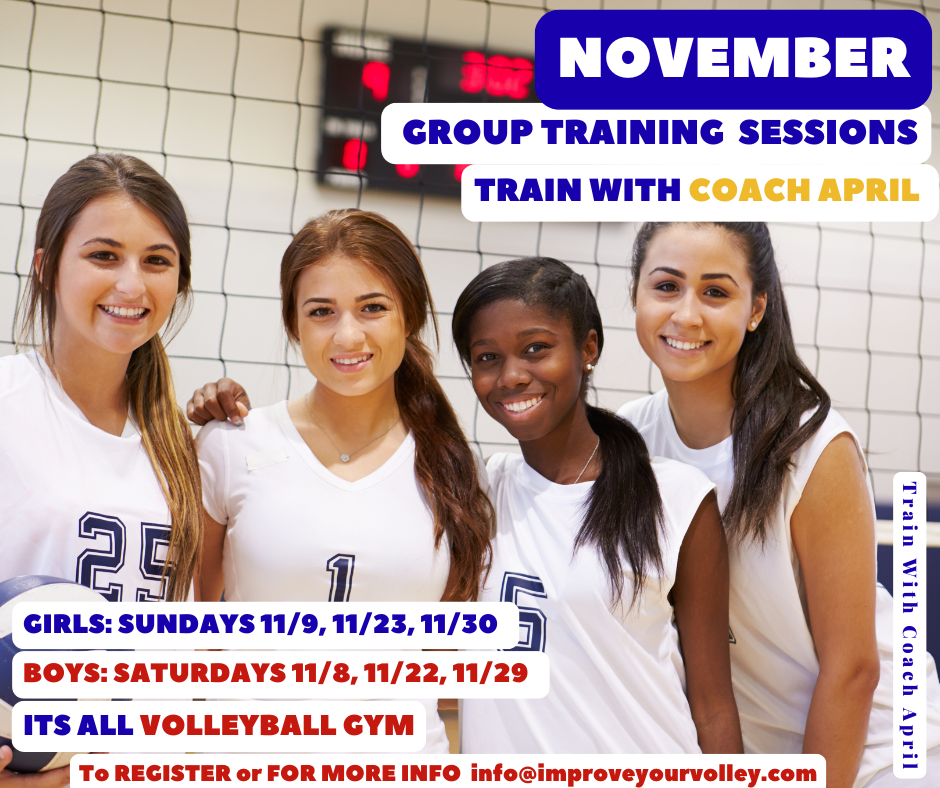
What Are You Looking For?
Click to Download Your Pre Serving Ritual Mastery Checklist pdf:
🎯Volleyball Pre Serving Ritual Guide -
Players! Learn How To Transform Your Serve from Weak to Weapon
Click to Download Your Parent's Volleyball Serving Checklist pdf
🎯Parent's Volleyball Serving Checklist Guide
Parents! Help Your Player Develop Championship Serves (Even If You've Never Played)

Hi there!
Thanks for stopping by. Hope you learned something today that will help you reach your volleyball goals.
Be sure to subscribe to my email newsletter so you can learn more each week!
Stay strong! Stay motivated!
-Coach April

SUSCRIBE to my email newsletter below!

 Click to learn more about the weekly volleyball classes and clinics or email info@imrpoveyourvolley.com for information
Click to learn more about the weekly volleyball classes and clinics or email info@imrpoveyourvolley.com for informationCongratulations to my seven Boys-18s Vegas Volley club players who played in two state championship finals yesterday, the 3A and 5A State champinship finals at Sunrise Mountain High School.
TOURNAMENT CHAMPIONS!
A-1 Vegas Volley VBC
In It To Win It Tournament
May 2 - 4, 2025 Tournament
Gold Medalists
18s Premier Division
Vegas Volleyball's Unsung Heroes: Celebrating Moms with Peace Love Volleyball Shirts
Ready to energize your volleyball mom journey?
Subscribe to my 'Producing Powerful Passionate Peaceful Players' email list above on ImproveYourVolley.com.
You'll receive energy-boosting tips, exclusive insights from me, Coach April Chapple on maintaining momentum in volleyball.
Let's power up the Vegas volleyball scene together!
Recent Articles
-
Volleyball Topspin Serve: How To Score Aces With Power and Spin
Nov 10, 25 03:10 PM
Want to add 3-5 aces per game? The volleyball topspin serve combines power and spin to score points. Learn the technique that makes passers fear your serve. -
5 Hitting Volleyball Drills Helping You Learn To Hit The Ball Harder
Nov 05, 25 12:33 PM
With these hitting volleyball drills, you have to adopt a fearless and aggressive attitude when it comes to spiking the ball against a two person block. -
Two Hitting Drills Volleyball Players Do To Learn To Beat The Block
Nov 05, 25 12:32 PM
Here are two hitting drills volleyball players use in our practices to teach our hitters how to beat the block while hitting or attacking at the net.

